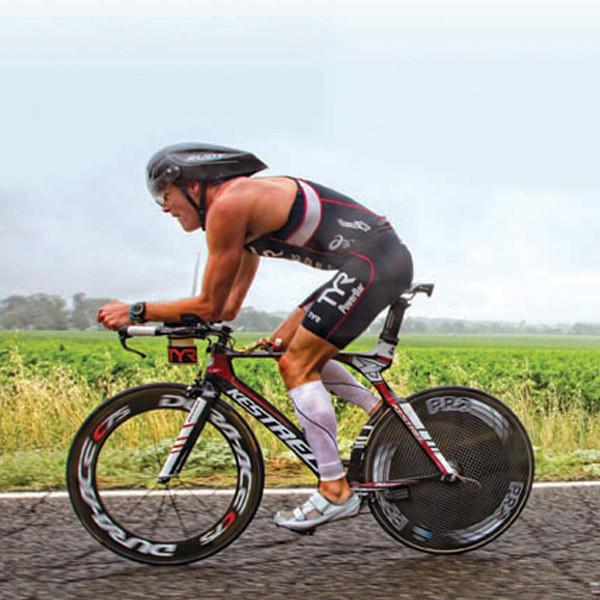Why should Cyclists wear Compression Socks?
Share
Updated on July 10, 2020 - originally published on Feb 16, 2018

Most cyclists can tell you the two biggest benefits of cycling: It saves money on transportation, and it gives you a workout at the same time. These days, cyclists of all skill levels are getting even more out of their rides by using compression socks. Buy Sports Compression Socks.
Buy the Best Compression Stockings from LegSmartUse discount code: CYCLIST, to get 10% off your entire cart. We want to THANK YOU for shopping at LegSmart! |
Studies have shown improved cycling performance just by wearing compression socks. But all riders, from the casual commuter to the cardio junkie, will find additional reasons to wear (try, get, buy) cycling compression stockings.
With rising gas prices and increasing environmental concerns, people everywhere are beginning to commute to work on bicycles. It’s far more fun than sitting in stop-and-go traffic, and it can spice up an otherwise sedentary lifestyle. City dwellers are learning how to beat traffic gridlock by touting two wheels instead of four. And with cycling, you can park almost anywhere – for free!
Seasoned cyclists who’ve been riding for years know that physical health is improved by pushing pedals for about an hour every day. Whether they’re into racing or just want to give the body and heart a workout, any experienced cyclist will rave about the mental and physical benefits of riding a bike. There’s something to be said for going somewhere powered by your own two legs.
But with any type of exercise, you can expect sore muscles and bodily fatigue. For cyclists, much of that wear and tear happens in the legs. However, many cyclists are discovering a secret weapon to combat sore muscles and leg fatigue: cycling compression stockings.
Benefits of Cycling Compression Stockings
Compression socks use a fabric technology called graduated medical-grade compression. This specially constructed knit is tighter around the foot and ankle, but eases in pressure as you move up the leg to the knee and thigh. Compression socks are knit in a way that helps with circulation by promoting blood flow from the lower extremities back up to the heart for oxygen replenishment. Benefits of using compression socks for cycling include:
Reduced lactic acid buildup: Medical professionals will tell you that getting fresh oxygen to your muscles is a vital part of any workout; not doing so can lead to lactic acid buildup. Fortunately, another key advantage of compression cycling stockings is their ability to flush out the lactic acid buildup that occurs after workouts. Lactic acid buildup happens when the body is working hard and can’t supply enough oxygen to the muscles – think of it as a backup fuel source. Cycling compression stockings, such as CEP biking socks, aid in the removal of lactic acid when it builds up during strenuous activity.
Extra leg support: All cyclists exert strain on their legs and feet muscles during a ride. Wearing CEP biking socks or other compression stockings lends extra support to the leg muscles and tendons, including the Achilles. Donning compression socks after a workout also helps your muscles recover. After an intense ride, keeping your socks on will help reduce muscle soreness, fluid retention and swelling. In fact, compression socks can be worn with your regular work attire, making them a versatile choice when it comes to footwear. Cyclists can give themselves added muscle support throughout the workday by bringing an extra pair of socks to wear after commuting to work.
Enhanced comfort: Cycling compression stockings also have special built-in features designed just for cyclists. Each sock is designed for either the right or left foot, which provides a perfect fit each time. And as your workout heats up, cycling-oriented compression socks are designed to keep your legs and feet cool with a special temperature-regulating material. This high-tech fabric also wicks away moisture and sweat as you ride. Plus, compression socks are equipped with extra foot padding to provide extra comfort when wearing cycling shoes – not to mention the prevention of blisters.
Get help from our Certified FittersDon't know which knee, thigh, or pantyhose, sock or stocking to get? Email us: support@legsmart.com Use discount code: CYCLIST, to get 10% off your entire cart. We want to THANK YOU for shopping at LegSmart! |
Choosing the Right Compression Socks
First, choose between compression stockings or socks. Generally, compression socks go up to your knee, while stockings go up to the thigh or higher. Also, compression stockings tend to look like nylons or leggings. You will also need to get an accurate measurement of your legs so you can purchase the correct sock size (the LegSmart.com blog has many free resources to teach you how to properly measure your legs). These special socks also come with different levels of compression, so you’ll need to choose the level that best suits your needs.
It is recommended to replace your cycling socks every four to five months. The fabric used in compression socks will eventually lose its elasticity, which is a sign they need to be replaced.



